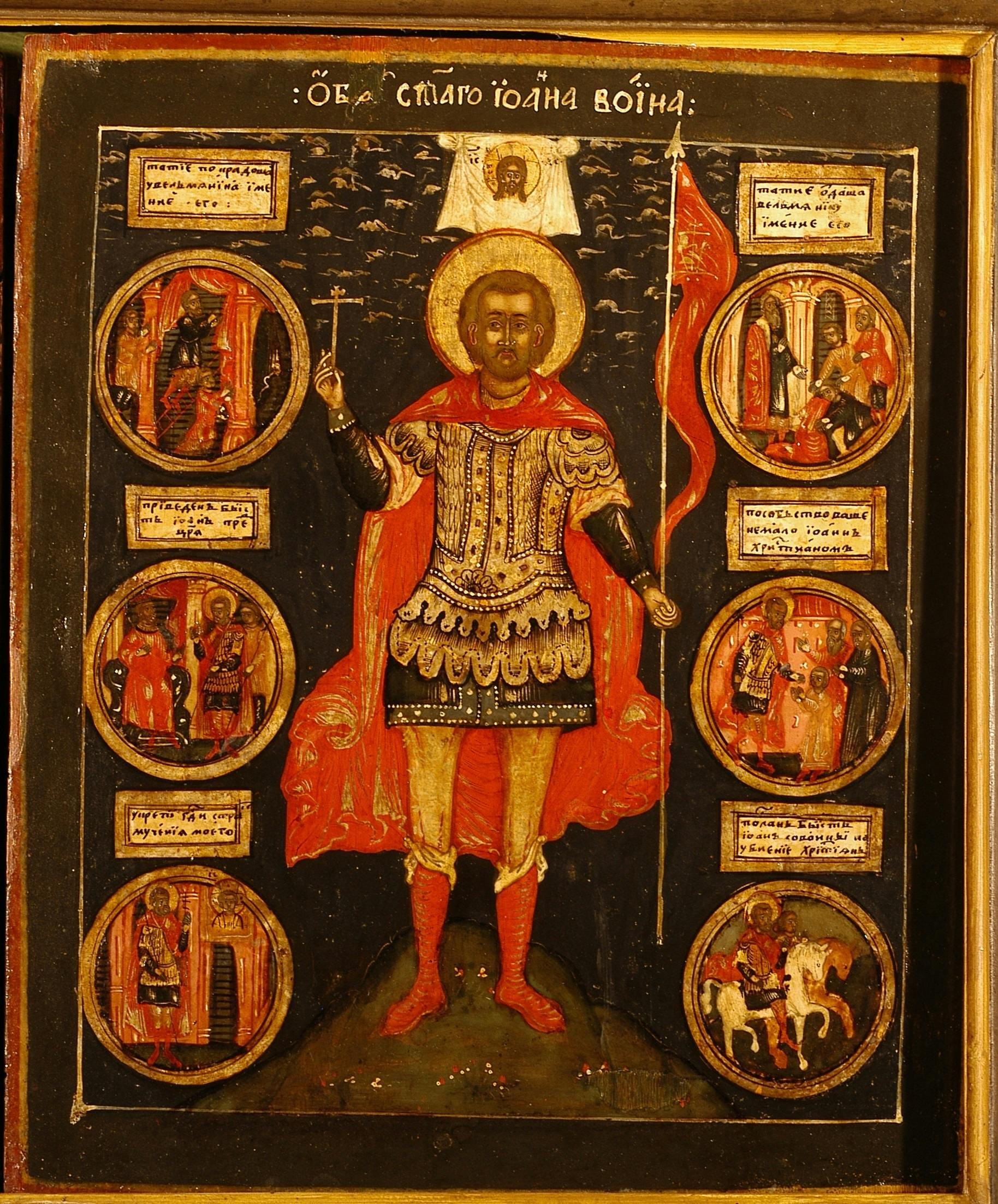St. John the Warrior, Martyr, with scenes from the story of his life
Central Russia
In the centre of the icon, a warrior dressed in the ancient style is depicted, wearing a precious set of gold armour. The saint, identified as ‘John the Soldier’ by the inscription added at the top (ОБРАЗ С(ВЯ)ТАГО IОАННА ВОIНА), is holding a small cross, emblem of martyrdom, and a lance, on which a banner with the cross of Calvary is portrayed, identifying him as a solider of Christ. The mandylion, the Acheiropoieta image of the Saviour’s face, is depicted above the halo.
The key episodes of the saint’s life are illustrated at the sides of the icon, among medallions accompanied by inscriptions. St. John lived in the 4th century and was an officer in the Roman army.Under the command of Emperor Julian (331-363), known as the Apostate since he refuted Christianity and reintroduced Paganism, John was sent to the eastern provinces to persecute Christians, but instead set about defending them. He was imprisoned for his charitable actions, and only freed after Emperor Julian died. St John devoted the rest of his life to deeds of mercy; his remains are held in Constantinople.
Although references to the devotion for St. John the Martyr among the Rus’ can be found dating back to the 12th century, it only began gaining momentum from the end of the 17th century. The many wars that wreaked havoc on life in the Rus’ between circa 1650 and 1720 probably favoured the affirmation of the cult that venerated the holy soldier, especially in military circles. Therefore, churches and chapels were built in the name of St. John, icons with his effigy were commonplace and in1695 a poem on the saint’s life by Russian poet Karion Istomin (known to have worked between the 1640s and 1718) was published as an independent text. Having convinced some thieves to return their ill-gotten gains, the episode narrated in the two tondos at the top of the Uffizi icon, the martyr was also invoked by believers as restorer of stolen goods.
